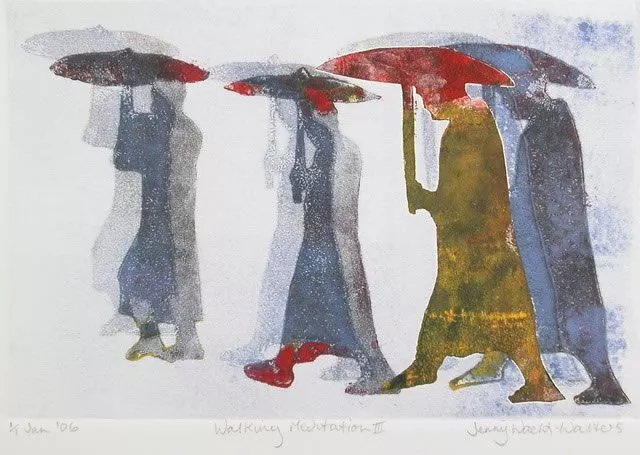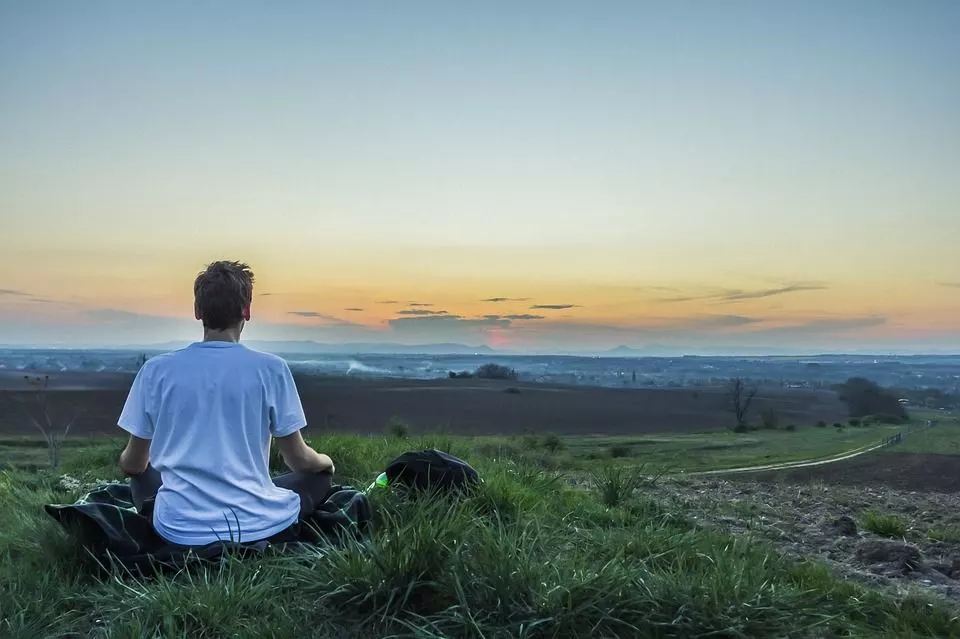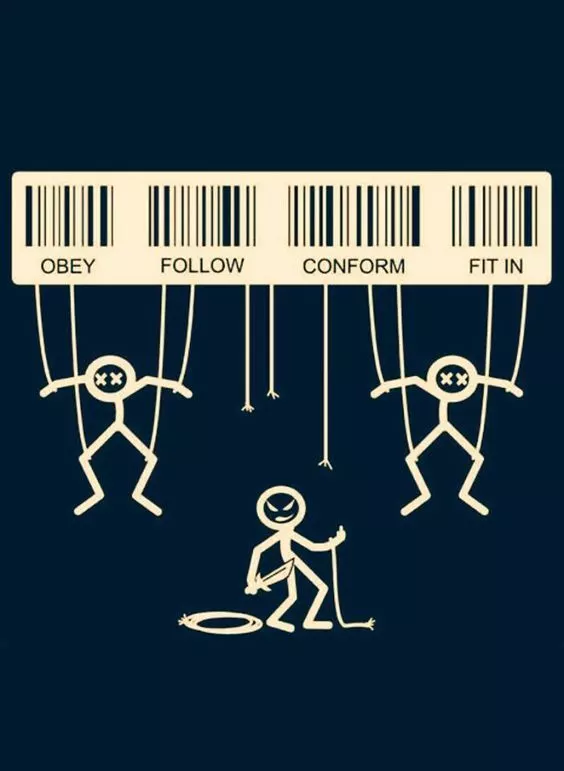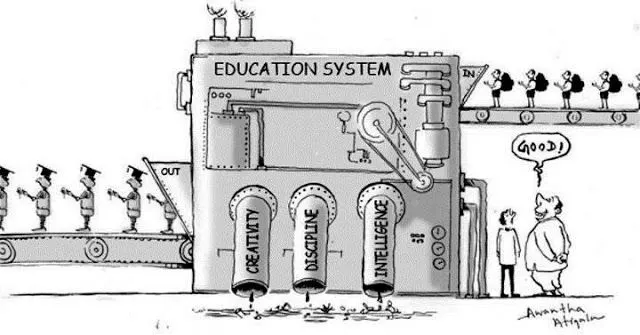“This human capacity to become a nexus of the inner and outer, of non-being and being, of what is written and what is not yet written, is key to aligning the worlds and keeping life in balance. Life was meant to function not as just the outer plane of reality, but as a multidimensional, interrelating reality. And there need to be those who know this secret.” ~ Llewellyn Vaughan-Lee
Those who learn how to tap into the power of the Nexus are obtaining the key to aligning worlds. They are catalysts that bind, sacred pivots that bring opposites back in line with one another.
They have the ability to hold the tension between opposites, and so they are able to turn the key of balance that aligns worlds, in coinsidencia oppositorum: a unity of opposites.

With one foot in the void and the other in infinity, they are sentinels of the inverse, guardians of the contrary, and periphery keepers par excellence. They’re able to balance madness with genius, silence with the “voices in the head,” and stillness with the movement of all things.
They are built to thrive on paradox, for when worlds collide to reveal the nakedness of mystery, they are then able to let go, to overflow, surrendering themselves as mighty conduits to the Great Mystery.
Becoming a nexus of creativity is becoming art itself, a cosmic mouthpiece, an agent of opposites, an instrument through which the universe is free to resonate its sacred song.
But there’s a price to pay. Deep creativity does not come without a cost. It takes a lot to truly engage with the following five ways of becoming a nexus of creativity.
As Jung said, “A person must pay dearly for the divine gift of the creative fire.”
1) Unite the inner with the outer
“The degree of a person’s intelligence is directly reflected by the number of conflicting attitudes she can bring to bear on the same topic.” ~ Lisa Alther
The primordial nexus is a sacred link between worlds. Opposites are not necessarily either/or, but both/and. While in the throes of being both/and the personified nexus intermittently focuses inward while seeing outward, and vice versa. Birds-eye-view meets animal-roots. Ubermensch (overman) meets untermensch (underman).
It’s the tug-of-war between our soaring spirit and our mortal flesh. Those tapping into the power of the nexus are the walking personification of such existential tearing. And they relish in it, because they know that it’s only within such tearing that the healing scar of creativity will flourish and reveal its bounty, its delicious secrets, its unknowns just waiting to be known.
2) Think between no-mind and mindfulness
“In the beginning you will fall into the gaps in between thoughts – after practicing for years, you become the gap.” ~ J. Kleykamp

Personifying the nexus is a sacred dance between no-mind and mindfulness. So as to avoid the dogmatic rigidity of fixed thinking, the creative nexus engages mindfully with being and becoming, while engaging with no-mind (in meditation and deep flow states) in order to experience the non-duality of non-being within the Nexus itself.
The creative nexus is then able to become a walking meditation, where life itself becomes source-material for the art of living creatively, and living well. Between intermittent mindfulness-living and no-mind-meditation, one’s lifetime becomes a mighty canvas and the art created on it is enchanted with magic and mythos. For both no-mind and mindfulness are a process of letting go.
As Leonard Cohen said, “You lose your grip, and then you slip into the masterpiece.”
There, between no-mind and mindfulness, between detachment and non-attachment, is the source of all human creativity: the mighty nexus where artists, poets, musicians, shamans and scientists since time immemorial have discovered the secrets of the universe and shared them with the rest of us.
3) Move between non-being and being
“It begins to appear that instead of knowers and knowns there are simply knowings, and instead of doers and deeds simply doings. Divided matter in form becomes unified pattern-in-process.” ~ Alan Watts
Between non-being and being there is a third thing: becoming. Those personifying the nexus are constantly in the throes of becoming. They are the Middle Way in action, constantly adapting and overcoming to the vicissitudes of the creative process within the human condition. In and out of existential crisis.
Back and forth between dark nights of the soul and bright days of providence. Not in a bipolar sense, mind you, but with a sense of metanoia: Greek for “changing one’s mind.” They are the epitome of creative metanoia, nihilistically lashing out while existentially overcoming, but having the wherewithal to make art out of it.
Non-being, like no-mind, is an in-between state experienced in meditation and in creative flow states. It’s a sacred navigation of nothingness, a dive into the void, where the duality of being becomes the non-duality of oneness.
Those able to personify the nexus are able to take this oneness back with them, through the veil between worlds, back into everyday being. The remaining residue floods their art, their music, and their poetry with an otherworldly magic that can be experienced by all.
4) Flow between what is created and what is not yet created
“Thuru: the process by which things become “what they are not” and, in so doing, paradoxically, become more themselves. This is something similar to the dynamic interplay of yin and yang in Chinese philosophy or the unification of opposites in the flow of the Tao. Western philosophy has a related concept in the dialectical exploration of the in-between–the flow of awareness from thesis to antithesis into the larger truth of synthesis, which in turn provokes a new antithesis. And so the beat of thuru goes on, embodied in the shape-shifting trickster of mythology.” ~ Louis G Herman, Future Primal

When we give in to the Flow state, we are creative microcosms giving into a greater creative macrocosm. We become Meta-ephemeral: a creative stopgap, an artistic crossroads, an imaginative sojourn. We are free to dance, to sing, to poetically crush out.
In short: sacred play is liberated from the hard sheath of the daily grind. Those personifying the creative nexus are wielding that sacred play like an infinite-edged sword. Nothing is out of its reach, including death anxiety, existential angst, and nihilistic ennui.
Like Brian Sutton-Smith said, “The opposite of play isn’t work; it’s depression.”
As such, the creative nexus is able to transform depression into passion, anxiety into art, neurosis into genius –all through the power that comes from surrendering to the flow state. We’re able to get out of our own way.
For it is within the flow state where thesis and antithesis merge to become creative synthesis. It’s where the subjective experience becomes objectively immortalized through creative expression.
Future art is the seed planted in the fecund soil of the Now. The creative nexus unveils the darkness, pierces the existential angst inherent within the human condition, and then creatively engineers an original psycho-symbolic overcoming of it, which he then calls Art. And what has not yet been created is free to be created.
As Ernest Becker said, “This has been the function of the creative deviant from shamans through Shakespeare.”
5) Dance between finitude and infinity
“He who is doing his true will is assisted by the momentum of the universe.” ~ Peter J. Carroll
Eternity says we’re everything, mortality says we’re temporary. Between the two, we dance. This sacred dance is a death-dance as well as a life-dance. But those truly personifying the creative nexus have acquired a new kind of disposition.
They realize that life is not a struggle, but a tango. Even the times that are a struggle are merely incorporated into the overall dance. Everything is seen as the same creative force, and instead of creating anxiety or depression, they create art.
As Alan Watts said, “Every form is really a pattern of movement, and every living thing is like the river, which, if it did not flow out, would never have been able to flow in. Life and death are not two opposed forces; they are simply two ways of looking at the same force, for the movement of change is as much the builder as the destroyer.”
As such, those personifying the nexus value flexibility and humility in the face of rigidness and hubris, but are not averse to using rigidness to create radical art and hubris to create audacious imagination, if need be.
They transcend finitude through imagination of the infinite. But they honor finitude by objectifying their own mortality through their own artistic expression (Becker’s Immortality Project).
Such an artist possesses a wisdom that is out of reach of the typical artist. They cut through the mundane conformity and bring light to dark and dark to light, mortality to immortality and immortality to mortality, while revealing the latent creative bliss bubbling beneath the surface of all fixed thinking.
If, as Edmund Husserl says, “All perception is a gamble,” then those personifying the nexus are the ultimate gamblers, riding the lightning between thundercloud and green earth, surfing the tidal wave between undertow and overflow, celebrating in the joyous union of opposites, while pulling the voice box of God out of the throat of the universe and blowing into it like a mighty bullhorn. The Nexus is the valid and the void, the abyss and the apex, and the death and the rebirth from which all things decay and flourish.
It’s the gambling artists, the radical poets, the ones personifying the nexus, who are carrying such sacred boons to the doorsteps of mortal men. And those mortals cannot help but point in awe and utter in astonishment, as Sufi Master Attar said, referring to Rumi, “There goes a river dragging an ocean behind it.”
Image source:
Cosmic skull
Artwork by David Ho
Psychedelic skull
Artwork by Alex Grey




 This is the sacred send off, the leap of courage. This is where the humorous hero digs down deep for that first existential laugh, that core chuckle, that ancient teasing that smears out all self-seriousness into humorous sincerity. Here, the cornerstone of the human condition gets fully tapped, revealing the cosmic joke for what it is: there is no permanence.
This is the sacred send off, the leap of courage. This is where the humorous hero digs down deep for that first existential laugh, that core chuckle, that ancient teasing that smears out all self-seriousness into humorous sincerity. Here, the cornerstone of the human condition gets fully tapped, revealing the cosmic joke for what it is: there is no permanence. The humorous hero is the personification of self-actualized audacity. With fearlessness in tow and preconditioning reconditioned, the full power of sacred humor becomes manifest.
The humorous hero is the personification of self-actualized audacity. With fearlessness in tow and preconditioning reconditioned, the full power of sacred humor becomes manifest. Daring to show the world our unique soul-signature takes tremendous courage. Especially in a world unaware of itself. Navigating such a world can be difficult, especially as a fearless contrarian who has reconciled her existential angst and reconditioned her own preconditioning.
Daring to show the world our unique soul-signature takes tremendous courage. Especially in a world unaware of itself. Navigating such a world can be difficult, especially as a fearless contrarian who has reconciled her existential angst and reconditioned her own preconditioning.










 As we change, we grow in and out of relationships. Relationships are not designed for longevity, but for lesson-learning. If they last, it is a by-product of them being a perfect key to your locks. Often, fighting with friends is a normal benchmark of closeness.
As we change, we grow in and out of relationships. Relationships are not designed for longevity, but for lesson-learning. If they last, it is a by-product of them being a perfect key to your locks. Often, fighting with friends is a normal benchmark of closeness.


